
Who could have predicted the invasions going on today – Russia invading Crimea and Ukraine, Israel invading Gaza? Who could have predicted a Malaysian airliner would be shot down over Ukraine. These events – and many more like them – tell us that our confortable views of what tomorrow will be like are fraught with peril.
We would be vastly more able to anticipate futures that are presently opaque to us by anticipating Alterative Worlds. The Global Trends 2030 report builds on the precedent set by earlier editions of Global Trends in identifying four possible future models of the world out to 2030 – but takes this alternative world futures analysis to a new level. It presents these models with a caveat, by noting that “none of these alternative worlds are inevitable and in reality, the future will probably consist of elements from all the scenarios.”
Based upon what we know about the megatrends and the possible interactions between the megatrends and the game-changers, GT2030 has delineated four archetypal futures. The four posited “worlds” that could present themselves as we move toward 2030 are:
- Stalled Engines
- Fusion
- Gini Out of the Bottle
- Non-State World
Read more about these potential Alternative Worlds on the Defense Media Network website.
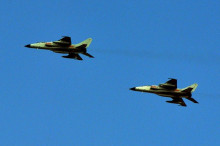
China’s rapidly growing military spending is paving the way for the country to expand its sphere of influence and challenge the U.S. across the globe, the Pentagon said, in a report laying out challenges facing America as it steps up involvement in Asia.
While U.S. military spending is in decline, China is spending billions of dollars to develop stealth fighters, cyber-weaponry, armed drones and a growing naval fleet that has repeatedly squared off with its Asian neighbors, according to the Defense Department’s annual report to Congress.
China spent more than $145 billion on military programs in 2013, the Pentagon estimated, part of a two-decade-long increase in the country’s military spending. China’s official budget has grown by an average of 9.4% each year since 2004, the report said. U.S. military spending is facing a constrained future as the military prepares to bring 13 years of ground wars in Iraq and Afghanistan to an end. “China’s military investments provide it with a growing ability to project power at increasingly longer range,” the report said.
The Pentagon said the Chinese air force is aggressively modernizing “on a scale unprecedented in its history and is rapidly closing the gap with Western air forces across a broad spectrum of capabilities.” China is trying to develop a stealth jet fighter, but the report said the country “faces numerous challenges” in the program, which it isn’t expected to overcome for at least five years.
The report also warns that China continues to use cyber-warfare to target the U.S. in an effort to increase its advantages over America. Cyber is a critical element of China’s military strategy and is becoming an increasingly tense battlefield for the new nations.
Read more here
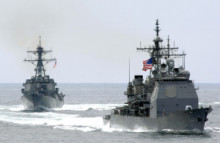
It is easy to look back from the perspective of 2014, with scores of Aegis cruisers and destroyers populating the U.S. Navy’s fleet – and with Aegis ships now serving as the Navy’s primary surface combatant – and think that the journey toward building an Aegis fleet was simple or straightforward. It was not. A full description of that journey is vastly beyond the scope of this post. But for those readers wanting more, the 2009 Naval Engineer’s Journal, The Story of Aegis: Special Edition contains a rich and detailed description of the Aegis program – how it came into being, where it is today, and where it is going in the future.
As Adm. John Harvey, former Commander, U.S. Fleet Forces Command, explained, what made the original Aegis program so successful was “a single-minded dedication to the pursuit of technical excellence.” That commitment to excellence permeated the Aegis community even before the first ship of the class, the cruiser Ticonderoga (CG 47), was commissioned in January 1983. It likewise remains embedded in Aegis today.
Read more about the United States journey to provide world-class missile defense on the Defense Media Network website here
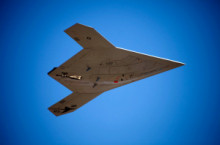
Technology changes everything. It creates possibilities that did not previously exist. As Max Boot famously said in his New York Times best-seller War Made New, “My view is that technology sets the parameters of the possible; it creates the potential for a military revolution.”
The U.S. Intelligence Community’s capstone publication, Global Trends 2030 notes that technology will figure prominently in what kind of future world we live in. It asks the question, will technological breakthroughs be developed in time to boost economic productivity and solve the problems caused by the strain on natural resources and climate change as well as chronic disease, aging populations, and rapid urbanization?
Read more about these Technological Game Changers on the Defense Media Network website here

Many believe the United States and China are on a mutual path to peace and prosperity, citing the “Walmart factor,” and suggesting our economies are so intertwined conflict between our two nations is impossible. For those who believe this, it may be worth remembering a quarter century ago this month China ruthlessly crushed the student uprising in Tiananmen Square.
Such actions should give us pause especially since China has put policies in place to completely block any mention of Tiananmen, an uprising on that date, or any reference to the event where the government turned on its own people. Not only that, but this incident has eerie parallels to events that impact U.S. national security today. Here is how Daniel Henninger put it:
This Thursday is the 25th anniversary of the Tank Man’s solitary protest. On June 5, 1989, the morning after the Chinese army crushed the students’ democracy rebellion in Tiananmen Square, with hundreds dead, a man in a white shirt walked in front of the army’s tanks, driving down a street near the square. For a while, he made the tanks stop.
To this day, no one knows who the brave Tank Man was. But the whole world watched on global television as he stood down the tank commander. When the tanks tried to go around him, he moved in front of them. Eventually, two people came from the crowd and led him away. He was never seen again.
Read more here.
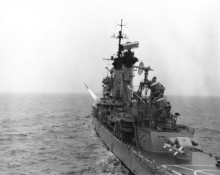
The U.S. Navy is the world leader in missile defense. For me, the story of the U.S. Navy’s journey to achieve effective fleet air defense is a personal one – and one that drove my professional career choices. But this is not a mere walk down “memory lane” or a bit of mid-life nostalgia, but an important point that helps, I believe, to illustrate the challenges facing surface-to-air missile development and Fleet operational deployment.
Read more about this journey and about U.S. Navy air and missile defense on the Defense Media Network website here
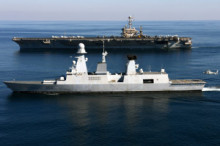
Americans have every right to ask: What is the United States’ role in today’s world? While there are many opinions among Americans – many of them at the far poles of internationalism and retrenchment – the thoughtful analysis in the National Intelligence Council’s Global Trends 2030 is worth considering.
Much has been made in the last decade regarding “America’s decline.” And given the current Washington gridlock, to say nothing of the shrill predictions of some pundits, one would think the United States is about to become a third-world power. It has become a debate that, while poorly-informed, makes up for it in passion.
Read more about America’s role in the world on the Defense Media Network website here.
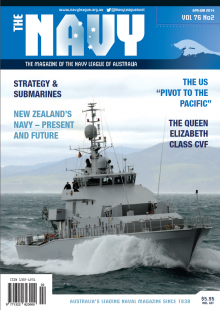
Much ink has been spilled discussing the United States “Rebalance to the Asia-Pacific region” or as it is known more colloquially – especially in naval circles, the “U.S. Pivot to the Pacific.” President Obama put it this way almost three years ago:
“Our new focus on this region reflects a fundamental truth – the United States has been, and always will be, a Pacific nation … Here, we see the future. With most of the world’s nuclear power and some half of humanity, Asia will largely define whether the century ahead will be marked by conflict or cooperation, needless suffering or human progress.”
President Barack Obama
Remarks to the Australian Parliament November 17, 2011.
In this prize-winning article in the Australian Navy League’s premier publication, The Navy, we examine whether this “pivot” is real or just rhetoric.
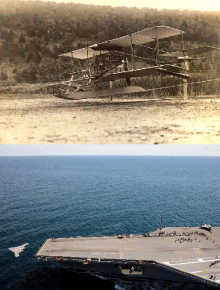
In outward appearance and the scope of their operations, they seemingly have nothing in common. While the A-1 Triad was constructed of wood and fabric with a top speed that would put it in the slow lane on a modern interstate highway, the X-47B Unmanned Combat Air System represents cutting edge technology. Yet, these aircraft, for what they represent to the development of naval aviation, are quite similar. Seminal moments in their service occurred in May during which the Navy this year celebrates the 103rd birthday of naval aviation.
Read more here

From the Information Dissemination website come two interesting and differing views of U.S. national security. Two well-known experts, Robert Kaplan and Usha Sahay, square off:
Kaplan stakes his claim here:
“But what about all those new global and regional institutions and organizations, to say nothing about the growth and opportunity that has come from financial markets? Aren’t they the other, more positive half of reality? They are. But then the question arises: Why have they been able to come into being in the first place? What ultimately undergirds them? The answer is one that many members of the global political and financial aristocracy do not want to hear: raw American power.”
“It is the various U.S. Navy fleets and numbered air forces that are the ultimate guarantor of stability in the key theaters of the globe…The U.S. Navy calls itself a global force for good. That claim would pass the most stringent editorial fact-checking process. Without that very naked American ambition, which allows the Navy and the Air Force to patrol the global commons, the world is reduced to the sum of its parts: a Japan and China, and a China and India, dangerously at odds and on the brink of war; a Middle East in far wider war and chaos; a Europe neutralized and emasculated by Russian Revanchism; and an Africa in even greater disarray.”
Sahay takes a different position here:
“It’s certainly true that America is changing its role on the world stage. But that’s not the same as retreating from that stage altogether. In fact, the opposite is true: by many measures, the Obama administration has increased American engagement with the world. What has changed is not the amount of engagement, but its nature. Obama has sought to re-orient our foreign policy away from a military-first approach, and toward a more comprehensive approach that leans more on diplomatic and economic tools.”
“Critics who believe that Obama has pulled back from the world stage are confusing quantitative changes in the nature of U.S. engagement with a qualitative decline in that engagement.”
Read both articles. For Kaplan, it is hard power that ultimately backs up diplomatic engagement. For Sahay-who not once, but twice, refers to pre-Obama foreign policy is terms of “militarism”, engagement is self-perpetuating.
Kaplan
Sahay











